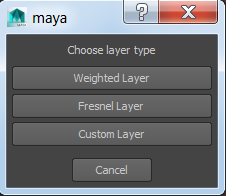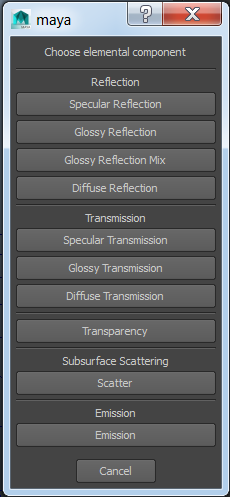Mental Ray’s new MILA material in Maya 2015 is a layered library shader that improves performance and flexibility. Wait, why do you care? What’s wrong with Blinn???
Stop using Blinn!
If you’re doing any kind of rendering in Maya, you’re using Mental Ray, because Maya’s software renderer is terrible. And if you’re using Mental Ray, you should be using Mental Ray materials!
and start using the new MILA material in Maya 2015.
At first, MILA materials can seem more complicated than the basic Mental Ray mia_material. In reality, though, the MILA material has simplified the options for your materials, and has actually made it easier than ever to create the custom look you’re after.
What is the MILA material?
MILA is Mental Images Layering Architecture (I think). It’s the wave of the future, as NVidia intends to switch all Mental Ray materials over to the MILA shader. The old MR materials, like MIA_material_x, have all sorts of parameters by default – diffuse, reflectivity, advanced reflectivity, refraction, etc. Even if you aren’t planning on using those features, they are still there, sucking up memory and slowing down renders! The MILA material breaks everything apart into separate components. Diffuse, reflection, transparency, scattering, and emission are all separate nodes. Whichever ones you need, you add to your material. The ones you don’t need, you leave out, saving memory and reducing render time. In the spirit of showing and not telling,
This video shows how to use the new MILA material!
In the vid I cover:
-
creating basic layered MILA materials,
-
assembling multiple layers,
-
adding multiple levels of reflectivity and specularity,
-
controlling transparency,
-
and most importantly, fixing things when they break!
Useful reference:
 Here are the layer types– These control how your layers blend together.
Here are the layer types– These control how your layers blend together.
Weighted Layer is a simple opacity blend.
Fresnel Layer is a Fresnel blend, good for reflective and specular layers.
Custom Layer allows control over the strength of normal and grazing angles.
 Here are the elemental component options – these are the actual materials! A few highlights:
Here are the elemental component options – these are the actual materials! A few highlights:
Specular Reflection is a spec highlight sans reflectivity.
Glossy Reflection is your reflectivity, with adjustable gloss levels.
Diffuse Reflection is your diffuse color parameter.
Glossy Transmission is your refractive transparency.
Transparency is like the old cut-out functionality.
Scatter is the new SSS node (I’ll dedicate a tutorial to this one!)
Shellac is easy and adding rust to metal is a snap!
The MILA material is worth knowing, and not just because it makes a lot of material types much easier to do now. Check out NVidia’s ARC forum, and you’ll see that VFX pros have been using the MILA shaders since Maya 2014. Guys on deadlines that tight won’t waste time fooling around with a new tool, unless it outperforms the tool they are already using.

Thanks JT, this helped a lot. Understanding the fundamentals of the Mila shader. Now I can do so much more, I’m busy working on tweaking Mila for car paint.